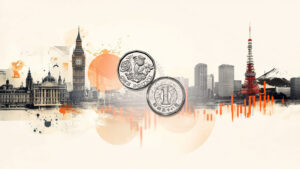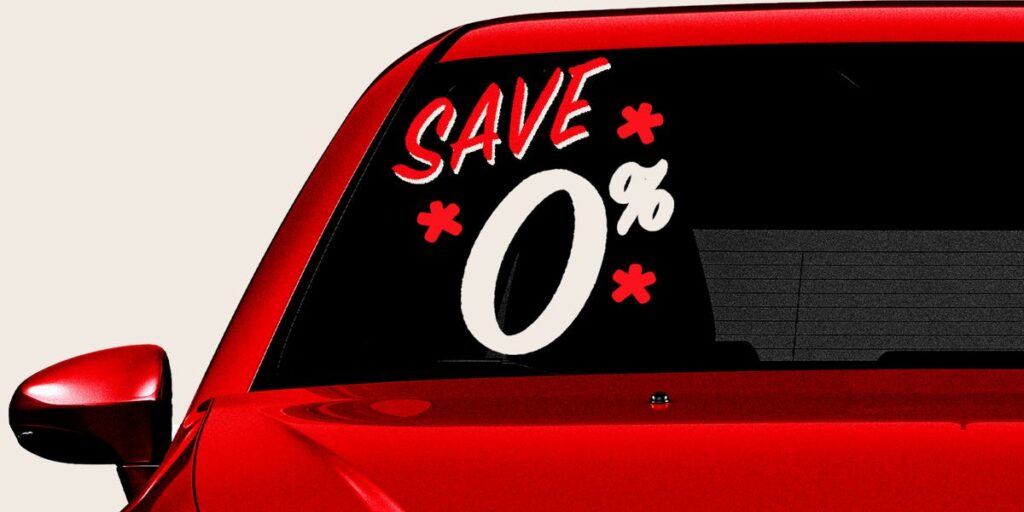There’s sticker shock, and then there’s whatever is happening with America’s used-car market. Prices for a slightly-less-than-new-car have been soaring over the past few years. Before the pandemic, the average price for a 3-year-old vehicle topped out at a little over $22,000. In 2025, the cost is upward of $31,000. And according to Edmunds, which tracks the car market, that number may soon sound like a bargain.
“I mean, it’s kind of mind-boggling for anybody who had the pleasure or context of having bought pre-2020, right?” says Ivan Drury, the director of insights at Edmunds.
You may remember the used-car apocalypse nestled inside the whole-world apocalypse during the COVID-19 outbreak. Supply chain disruptions in new vehicle production, increased competition from rental car companies, and a surge in demand from consumers seeking to socially distance themselves from others behind the wheel caused a scramble for older vehicles. Like many things post-pandemic, the used car sector is not back to normal. The average price of all used car transactions is below its pandemic peak, but still thousands of dollars more expensive than it was six years ago. Prices are creeping up again, too: The most recent Bureau of Labor Statistics data shows they’re up 6% over the past year.
“Those hangover effects from so much disruption from years ago, it’s all playing out now,” Drury says.
With tariffs in the mix and new car prices continuing to creep up, the future may be worse. The answer to the perennial question of when is the “best time” to buy a used car may now permanently be “there’s no such thing as a best time.” And when it comes time to get a car, new or used, hope you have some time to shop around.
Or as Drury puts it: “It’s not just reestablishing your expectations, but coming to terms with today’s new reality, which is unfortunately not in your favor.”
To state the obvious, before a car can be used, it has to be new. So when there’s a slump in new cars rolling off the lot, that hits the used vehicle market down the road. According to data from Edmunds, millions fewer new cars have been sold in the US in recent years. Sixteen to 17 million new cars were sold annually in the US from 2014 to 2019. From 2020 to 2022, that number fell to 13 to 14 million each year. Sales have been creeping back up — Edmunds estimates sales will finally surpass 16 million again this year — but even with the rebound, the ripple effects of the pandemic-era semiconductor shortage and other supply-chain and sales headaches continue to have an impact.
“Those vehicles never entered the vehicle ecosystem to become used vehicles for consumers, and that’s the crux of the matter right now, it’s that hole that was made,” says Jeremy Robb, senior director of economic and industry insights at Cox Automotive.
There simply aren’t as many people going to dealerships looking to trade in cars they bought new two, three, or four years ago. And if they are turning up, it’s with vehicles that were more expensive in the first place because of pandemic-era pressures. Stephanie Brinley, an automotive analyst at S&P Global, says that because of supply chain issues, carmakers focused on “their most popular models and their most popular trim levels,” which tended to be on the middle or high-end of their price range.
“So you have a combination of a vehicle that was more expensive in the first place and relatively low supply,” Brinley says.
Leasing is a factor, too. Typically, about 30% new cars are leased every year, Robb explains, but that fell to about 17% in 2022. Automakers would rather customers simply buy a car outright — they make more off of it — so heightened consumer competition for a limited number of pricey new vehicles reduced the need for manufacturers to offer leasing terms, because they were selling premium cars for close to full price. Most leases mature in 36 months, at which point the car is often turned in and put on the used car market.
“The lease maturities have really been contracting over the past year and a half and will continue to contract,” Robb says.
Apart from the pandemic, there are other generally consumer-unfriendly shifts in the new car market that are trickling down to the used car market. New cars have gotten extremely expensive as people load up their vehicles with all sorts of pricey features and tech. Once a new car’s price goes up, used cars of the same model go up, too, as they tend to be anchored together. American drivers lean toward bigger, pricier cars, which is fine with automakers since the larger models tend to produce more profits. Many more affordable, smaller vehicles have been pulled off the market altogether — RIP to the Ford Focus, Chevy Cruz, and Dodge Dart. The impact is multi-fold: Used cars are more expensive because they were more expensive when they were new, owners may be holding onto them longer to justify the higher price tag, and some more cost-conscious would-be new car buyers are being priced out of the market.
“We’re not seeing a great expansion of new vehicles and definitely not entry-level new vehicles, so the people who would look to a $30,000 entry-level model are forced into the used car market,” says Sam Fiorani, an industry analyst at AutoForecast Solutions. Some manufacturers are starting to notice the missing part of their lineups and fill it, but even those prices are going up quickly. “Where entry-level was $15,000 not too long ago, it’s suddenly closing in on $30,000,” Fiorani says.
“Every time you do something that raises the cost of a new car, they’re at such high levels already, what you’re really doing is creating another used vehicle consumer,” Robb says.
When I ask analysts and auto experts whether the used-car price picture is going to get brighter anytime soon, the answer is more or less… not really. While vehicles are taking longer to sell as people hunt for deals and think it through, demand isn’t coming down. Nathan Garnett, chief business officer at online marketplace OfferUp, tells me that even as listing prices for used cars have increased on the platform over the past year, sell-through rates have not budged. “Buyers are willing to pay those prices,” he says.
It makes sense: The US is very car-dependent, and if you need a car to get to work or school or the grocery store, you need a car, full stop. Plus, driving can be a fun and pleasant way to get around.
As with many other industries, the tariffs are an elephant in the room. Brinley, from S&P Global, says their implications are the “thousand-dollar question.” Many automakers have been eating the costs of tariffs, though that can’t go on forever if trade uncertainty persists. Brinley says they’re “cautiously watching” for trade agreements with the EU and Japan to be solidified, but bigger questions loom around negotiations between the US, Canada, and Mexico — especially since the free trade deal between the three countries is up for review in July 2026. “In the meantime of all of that, automakers are moving through a lot, so prices will come up,” she says.
You can’t make new used cars.
While tariffs haven’t been a big factor so far, the anticipation of them caused some people to pull forward their purchase of a new car to avoid anticipated price hikes in the future. That’s good for the used market in that they traded in their old car, but at the same time, dealers who are also expecting higher prices paid more for trade-ins than they would have otherwise. “That’s messed with the market a bit,” Drury says.
Tariff-driven purchases haven’t been linear, either, says Kevin Roberts, director of economic and market intelligence at CarGurus, a car research and sales website. They saw sales of new and used vehicles pick up in March and April, around President Donald Trump’s Liberation Day tariff announcements, normalize, and then pick back up again toward the end of the summer. “I think people were just kind of like, ‘Oh, prices could go up even further. I should go get a car now if I was kind of looking for one,” he says.
One of the more uncomfortable realities of the American economy in the wake of the pandemic is that prices will not return to their previous levels. While inflation has slowed, we won’t see widespread deflation (nor do we want to). That means resetting expectations before you walk onto the car lot, developing a bit of price tag amnesia, and kissing that 2013 cost you may have in your head goodbye. There are surely deals to be had, but they’re hard to find, and the $20,000 that might have gotten you a solid 3-year-old vehicle 10 years ago will now land you an 8-year-old car with 80,000 miles on it. On used vehicles, we’ve made our bed, and now we have to lie in it.
“You can’t make new used cars,” Fiorani says.
Emily Stewart is a senior correspondent at Business Insider, writing about business and the economy.
Business Insider’s Discourse stories provide perspectives on the day’s most pressing issues, informed by analysis, reporting, and expertise.
Read the full article here
















